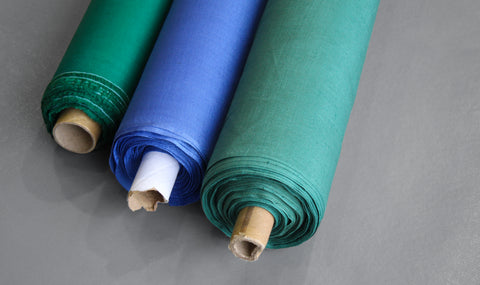This week we welcomed our new range of European and Japanese Linens, and they've got us thinking about those outfit staples we have on repeat in our trans-seasonal wardrobes. Think throw-on dresses, thrash worthy trousers, layering blazers or even that slouchy trench you can't go without.
What better way to celebrate the new collection than with a pattern round-up, and our teams tips for making working with linen easy as pie.
Linen Loving Patterns

It goes without saying that a linen shirt is an absolute wardrobe essential. Whether it's an airy beach cover up or a lined evening shacket, a linen shirt can be layered up or worn down for just about every occasion.
Why not try:

There is nothing better than a pair of staple pants that can be thrown on with absolutely anything. Matching linen shirt for sunday strolling? Check. Silk Cami and an oversized blazer for Friday evening drinks? Check. Bare feet and your favourite pair of togs for lounging around the bach? Check, check, check!

Why not try:

If it's a sneakers and hair claw day, this is a winner. Strap on some heels and statement earrings, and suddenly it's a wedding worthy outfit.
We just can't go past the humble linen jumpsuit, an all-in-one outfit worth hanging in everyone's wardrobe.

Why not try:

Last but not least, the all important outerwear. Lucky for us, Linen truly is the ideal trans-seasonal fabric; perfect for a lightweight summer jacket or lined for an easy layer when a chill hits. It's hard to go past the classic blazer, you could opt for a slouchy trench, or go long and sleeveless for something a bit different.


Quick tips for sewing with Linen
1) Always pre-wash your fabric. Hot wash is best to avoid any further shrinkage after sewing.
2) Always press post wash. Linen has a natural crease, but giving it a good press with steam post pre-wash will make sure you cut and sew your fabric more precisely.
3) Use tailors chalk or pencil. Some fabric markers can permanently mark linen, even faintly. Luckily we stock the world's best tailors chalk here.
4) Test your tension first. Because of the nature of their weave, linens tend to need a little more attention to your stitch tension. Test on a scrap piece before you dive in.
5) Finish properly. Because of linen's typical looser weave, it tends to unravel more easily than other fabrics. Take care when zig zagging or overlocking to make sure you've really secured the seams, or try flat felled or french seaming to really lock them in place.
6) Accept the wrinkles! The natural texture of linen means it tends to crease more, but this should be celebrated - who doesn't love a good tactile fabric?

Have we turned you into a Linen fanatic yet? Get your fix by shopping our full range of Linens here.
